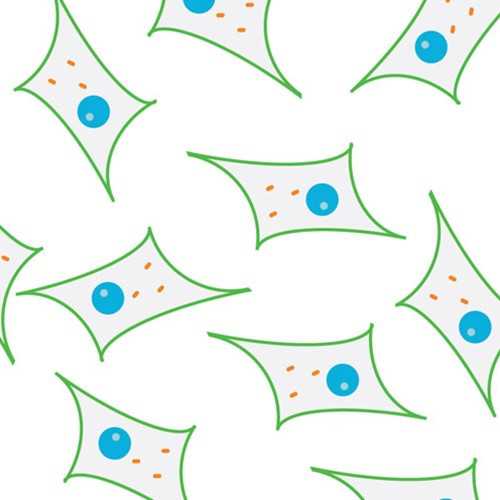SRp20 Expressing Tumorigenic MEF/3T3 Tet-Off Cell Line (MEF-T7-SRp20)
MEF/3T3 Tet-Off Mouse Fibroblast Cell Line stably transfected with a T7-tagged SRp20 (SRSF3) expression construct (pJR17).
Alternative RNA splicing is a means by which the human genome can produce many more proteins from the genes available. It is emerging that aberrations in alternative RNA splicing contributes to the development of cancers. SRp20 (SRSF3) is a cellular splicing factor that is involved in the process of alternative splicing of RNA. Investigators at the National Cancer Institute (NCI), National Institutes of Health (NIH) have discovered that SRp20 is overexpressed in many types of cancer and furthermore promotes the induction and maintenance of tumor cell growth. This was demonstrated in part by engineering a non-tumorigenic cell to become tumorigenic in mice by overexpressing SRp20.
From the laboratory of Zhi-Ming Zheng, MD, PhD, National Cancer Institute/NIH.
MEF/3T3 Tet-Off Mouse Fibroblast Cell Line stably transfected with a T7-tagged SRp20 (SRSF3) expression construct (pJR17).
Alternative RNA splicing is a means by which the human genome can produce many more proteins from the genes available. It is emerging that aberrations in alternative RNA splicing contributes to the development of cancers. SRp20 (SRSF3) is a cellular splicing factor that is involved in the process of alternative splicing of RNA. Investigators at the National Cancer Institute (NCI), National Institutes of Health (NIH) have discovered that SRp20 is overexpressed in many types of cancer and furthermore promotes the induction and maintenance of tumor cell growth. This was demonstrated in part by engineering a non-tumorigenic cell to become tumorigenic in mice by overexpressing SRp20.
From the laboratory of Zhi-Ming Zheng, MD, PhD, National Cancer Institute/NIH.
This product is for sale to Nonprofit customers only. For profit customers, please Contact Us for more information.
| Product Type: | Cell Line |
| Name: | MEF-T7-SRp20 |
| Cell Type: | Fibroblast |
| Accession ID: | P84103 |
| Morphology: | Spindle |
| Source: | Skin |
| Organism: | Mouse |
| Biosafety Level: | BSL-2 |
| Growth Conditions: | Growth media DMEM with 10% FBS, 1% Pen-strep-glutamine, plus 200ug/ml Hygromycin B, 100ug/ml G418 |
| Cryopreservation: | 90% calf serum, 10% DMSO |
| Storage: | Liquid nitrogen |
| Shipped: | Dry Ice |
- Jia R, Li C, McCoy JP, Deng CX, Zheng ZM. SRp20 is a proto-oncogene critical for cell proliferation and tumor induction and maintenance. Int J Biol Sci. 2010 Dec 15;6(7):806-26. PubMed PMID: 21179588; PubMed Central PMCID: PMC3005347.
If you publish research with this product, please let us know so we can cite your paper.


